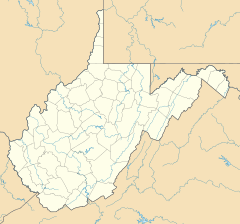Laneville, West Virginia facts for kids
Quick facts for kids
Laneville
|
|
|---|---|
| Country | United States |
| State | West Virginia |
| County | Tucker |
| Time zone | UTC-5 (Eastern (EST)) |
| • Summer (DST) | UTC-4 (EDT) |
Laneville is a small, unincorporated community located in Tucker County, West Virginia, United States. It sits along Red Creek, which is a smaller stream that flows into the Dry Fork of Cheat River. Laneville is also found near the southern edge of the Dolly Sods Wilderness, a special natural area within the Monongahela National Forest.
Contents
History of Laneville
The Start of Laneville
Laneville began as a busy town focused on cutting down trees. In 1902, a company called Parsons Pulp and Lumber built a large mill on Red Creek. This mill used a special machine called a band saw to cut logs into lumber.
Soon, a whole town grew up around the mill. This type of town, which grows quickly because of a booming industry like lumber, is sometimes called a "boom town." At its busiest, Laneville had more than 300 people living there. The community was named after Martin Lane, who was one of the people who helped start the Dry Fork Lumber Company.
Laneville's Town Rules
In 1909, the people of Laneville voted to officially become an incorporated town. One main reason for this was to make a rule against places that sold alcoholic drinks. However, people who wanted to visit such places could easily walk a short distance down the railroad tracks to a nearby settlement. This other settlement, called Wyoming Lumber Company, had been set up in 1907 and allowed those businesses.
The End of the Lumber Era
The mill in Laneville was very important for processing timber from the southern part of the Dolly Sods area. Most of the trees from that region were cut down and brought to the Laneville mill.
By 1920, almost all the timber had been cut. Because there were no more trees to process, the Laneville mill closed down. After the mill closed, many people moved away. The town's population became much smaller, with fewer than 50 residents by the mid-1970s.



